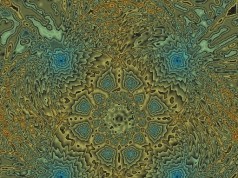I pursue my (energy motivated) program of turning all mathematics and logic, FINITE. I define the appropriate notion of META. Not just that, but I use the notion to make any logic into a chrono-logy. (A Chronology/Semantic Hierarchy evades the logical paradoxes.)
This is extremely advanced material, well beyond the edge of what’s commonly understood, using implicitly the implicated order from my sub-Quantum theory. Still most of the notions used below are easy to understand!
The notion of “META” is fundamental for the analysis of any system of thoughts or emotions. What’s going meta? I claim: Any theory has meta-theories associated to itself.
If one looks at the literature of meta, it’s a big mess. Recently it was encumbered by a sensation author obsessed by “strange loops” (Douglas Hofstadter, in books starting in 1979 with Gödel, Escher, Bach.)
Studying meta with “strange loops” is older than Aristotle (see the Cretan paradox below).
However the notion of meta I introduce here is much more general (although it contains the “strange loops” thingy, it also evades it, see below!)
To understand the essence of meta, one has to go back to bare-bone logic.
Given a language L, one can talk within that language L. However, what’s L made of? L = (LOG, TRUTH, U). “LOG” is the logic, U the Universe of objects the logic applies to. The logic consists in a set of assemblies that can be applied again and again to objects of U and make constructions. “TRUE” is a label applied to some Well Formed Formulas (WFF) within LOG. (Not all WFF are TRUE.)
Example: suppose LOG is the usual logic, and U consists only of the set made of 3 elements: eat, banana, good. Then ((eat, banana) –; good), a Well Formed Formula from LOG and U, could be the (one and only) TRUE formula (all WFFs are true in some purely formal sense).
Metalogic and metamathematics, as usually understood, arose when Cantor showed that the Real Numbers were uncountable. Cantor was the metamathematician per excellence (he invented cardinal and ordinal theories). Cynics would say that’s why Cantor became crazy: he went a few “meta” too far.
Relatively simple modifications of (one of) Cantor’s proof(s), his diagonalization trick, led to the revelation that any logical system that contains the usual arithmetic is incomplete: statements can be made that are neither true nor false (which statements, that’s not clear; although Cantor’s Continuum Hypothesis is one of them.).
From my point of view, the problem with the most honorable, and usual, metalogic is that it uses infinity to go from logic to metalogic. I believe only in finite stuff. (Still the Cretan/Liar paradox, that started the field, 26 centuries ago, looks finite, although it truly is not really.)
However one can define meta easily in a finite (or not!) setting:
TRUE, (by definition the set of all true WFFs) is a subset of WFF, the set of all WFFs. (LOG2, TRUTH2, U2) is meta relative to (LOG1, TRUTH1, U1) if and only if each of three sets of the latter is a subset of the corresponding set of the former, one of them strictly (say TRUTH 2 includes TRUTH1, or U2 includes U1).
So meta carries as a useful concept in the finite realm, and has nothing to do with confusing causal loops.
How is the 26 centuries old Liar paradox solved in this scheme? That’s the paradox presented by the statement:
Well, that deserves its own essay. Let’s just say I was chuckling all the way about how clever I was, until I discovered that my first solution was exactly the one found by Buridan seven centuries ago, and the second one, using my theory of meta above, resulting in a semantic hierarchy, was somewhat similar in spirit to that of Alfred Tarski.
Buridan’s solution is excellent (he notices that “This statement is false” is equivalent to A and non A, so is obviously false). However this is too ad hoc. One needs to handle contradictions where the implication chain is longer (A –; B –; Non A). Thus:
My hierarchy idea is to build the Language L by layers, like an onion, starting with a core (L, TRUE, U). One assumes that the initial TRUE of WFFs is non contradictory. Call that SEMANTIC (0). And then one grows TRUE by using L and U, one implication (or operation) of L at a time. Operating L once on TRUE, one gets TRUE (1). Either TRUE (1) has a self contradiction, or not. If it does, stop: (L, TRUE, U) admits no META. If it does not, call it SEMANTIC (1), and proceed to (L, TRUE(2), U). And so on. The iteration operation gives a notion of time (like a clock in a computer). L(n + 1) is richer than L(n), etc.
Thus META allows to build a hierarchy of logics, and semantics. To say that a theory is “meta” relative to another can be rigorously defined.
Progress in understanding is always achieved by climbing up the Semantic Hierarchy of meta.
Patrice Ayme





